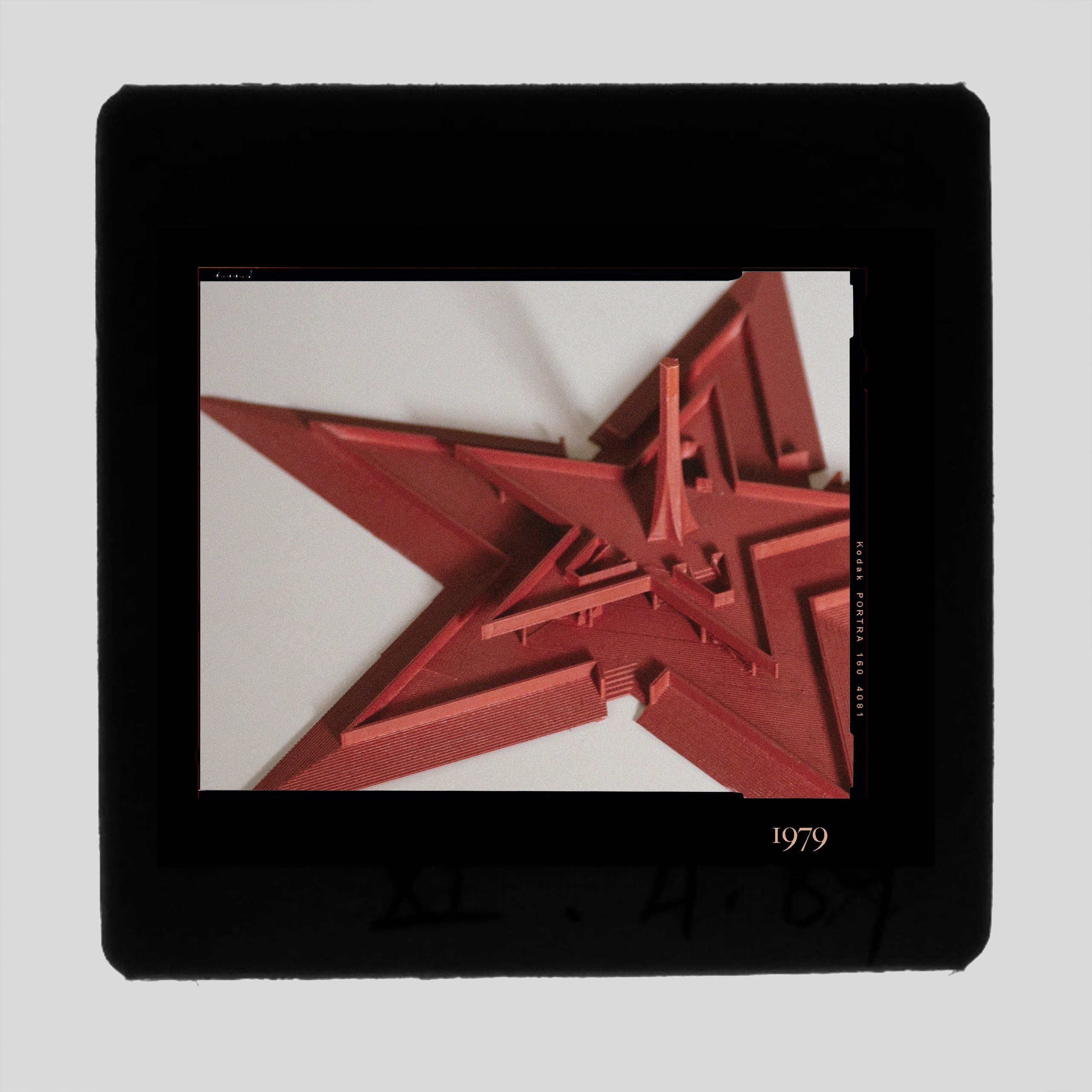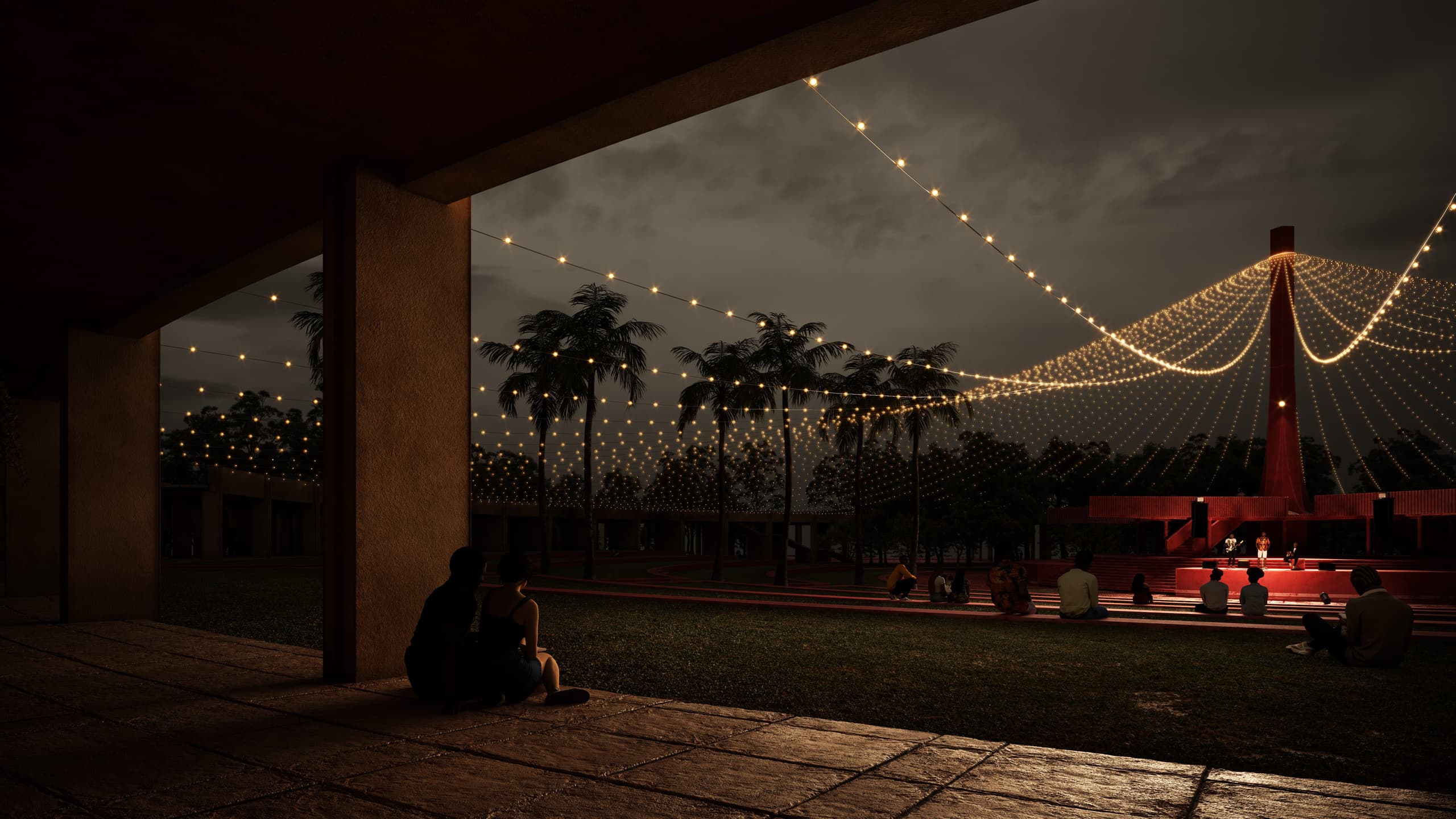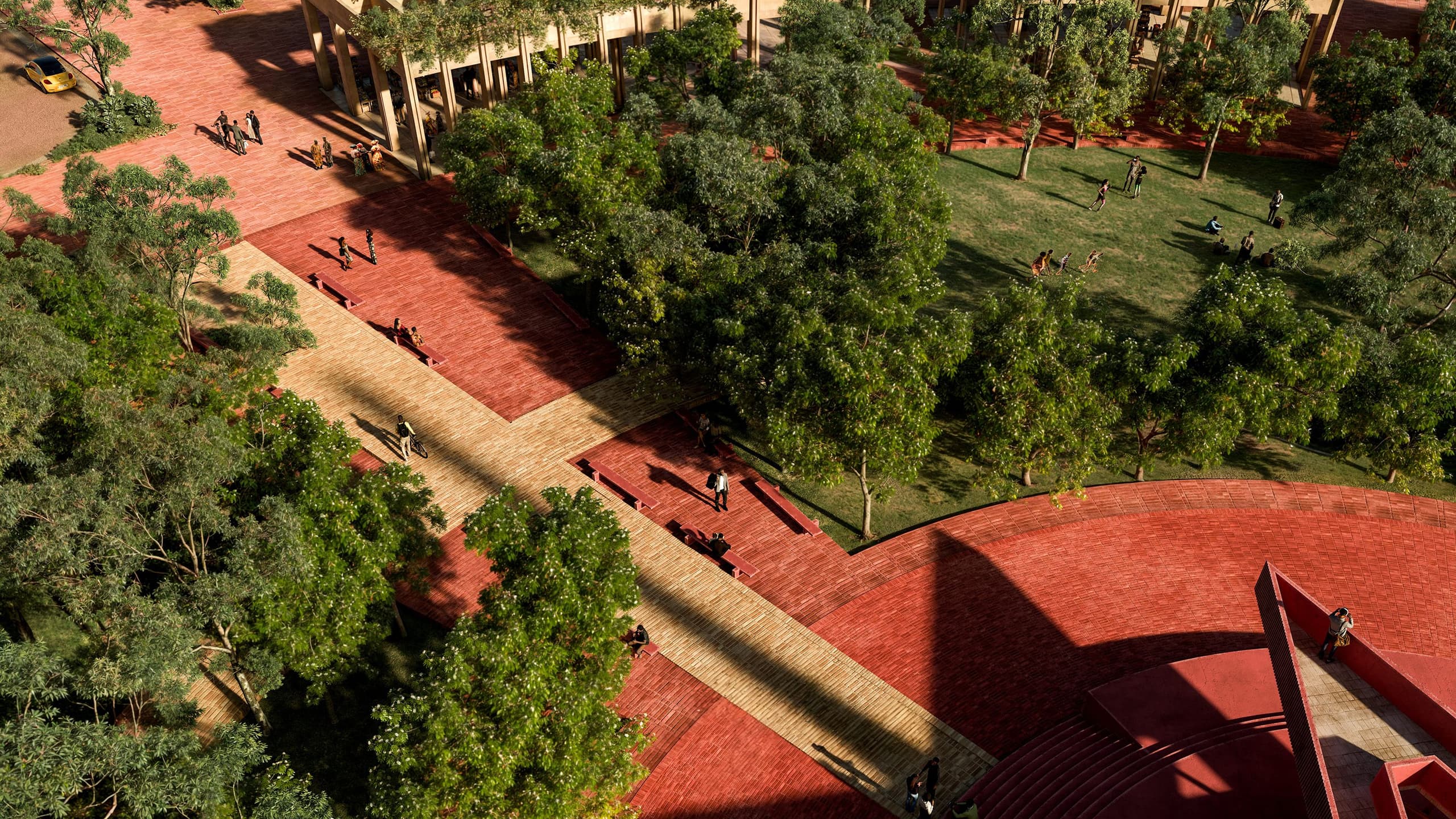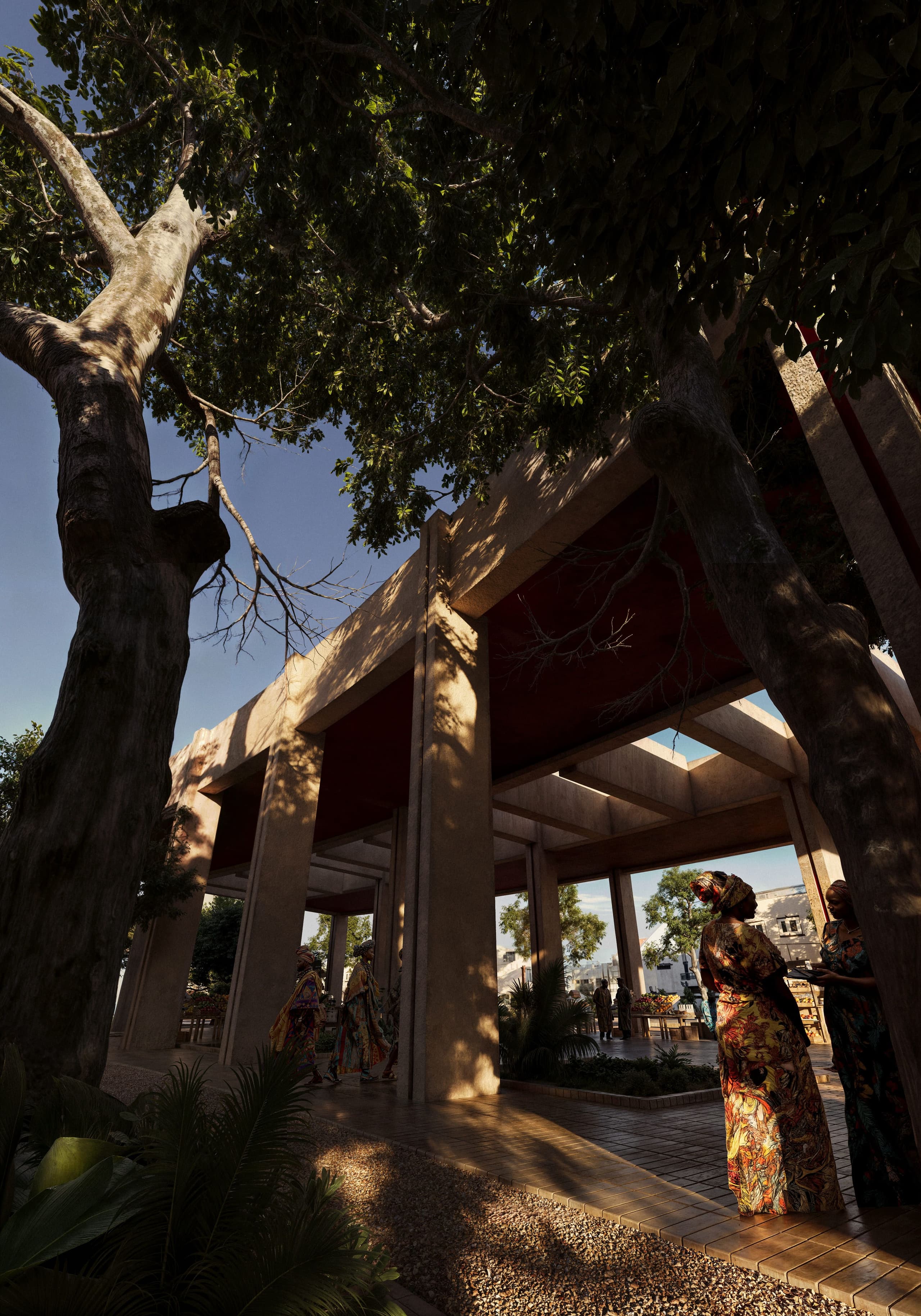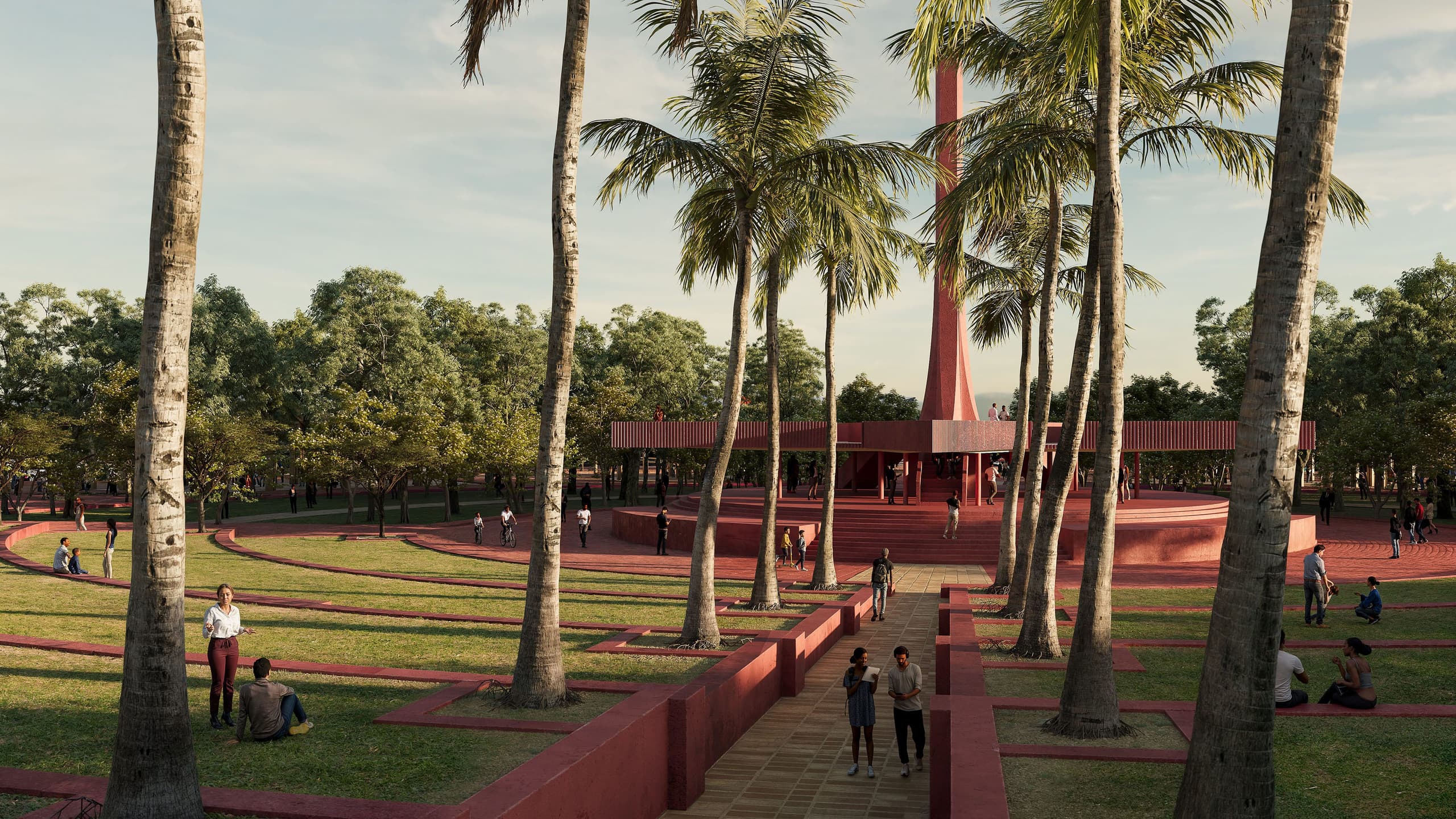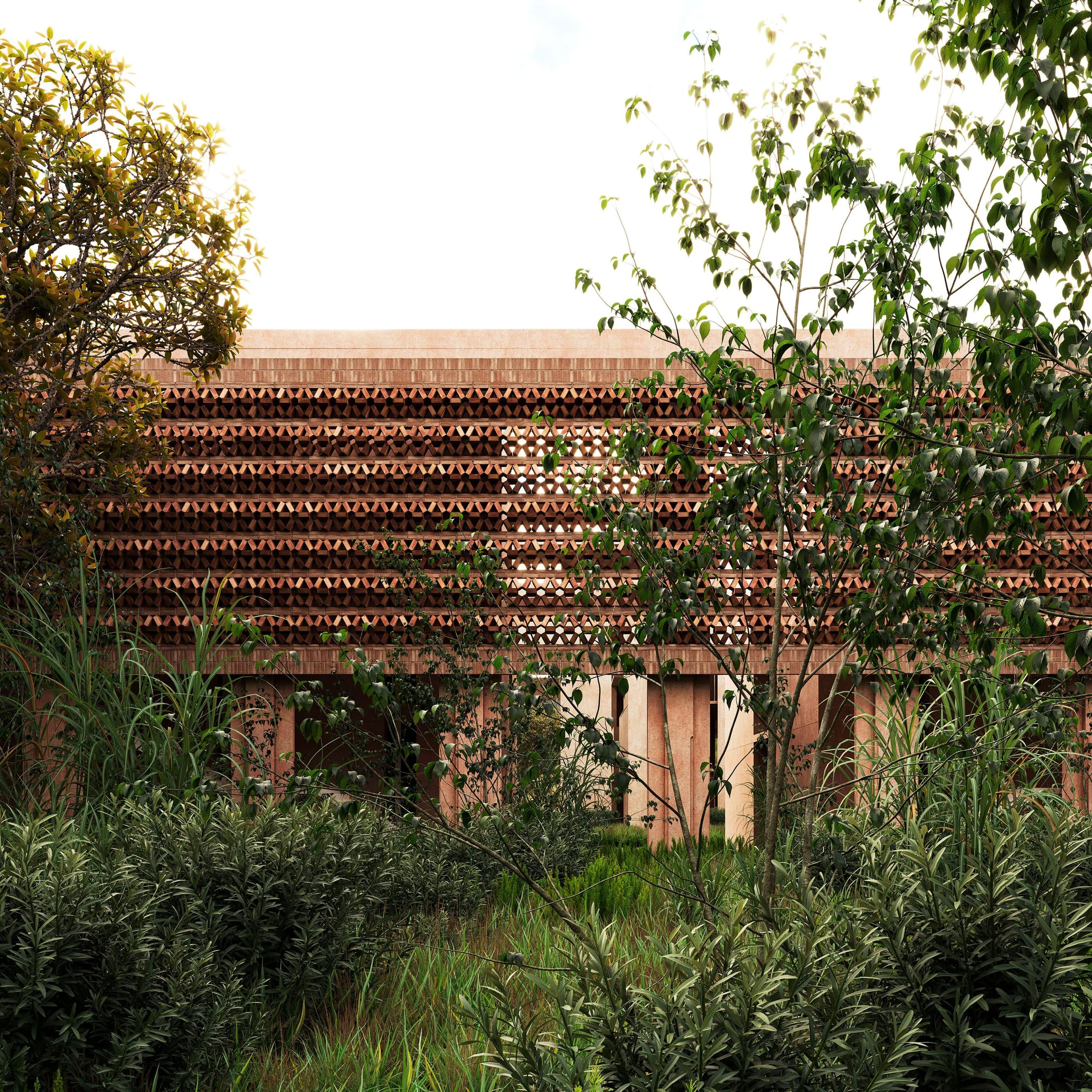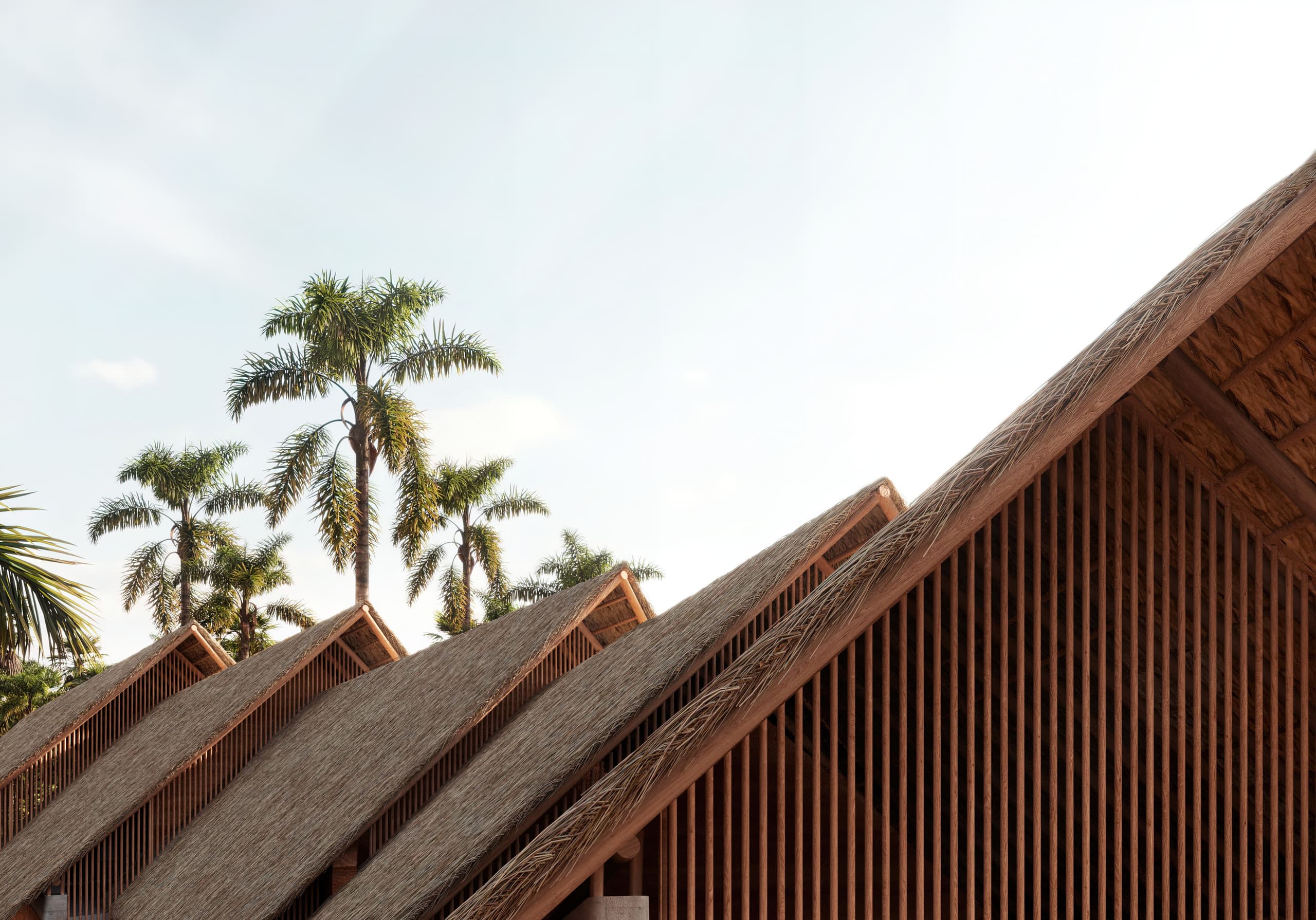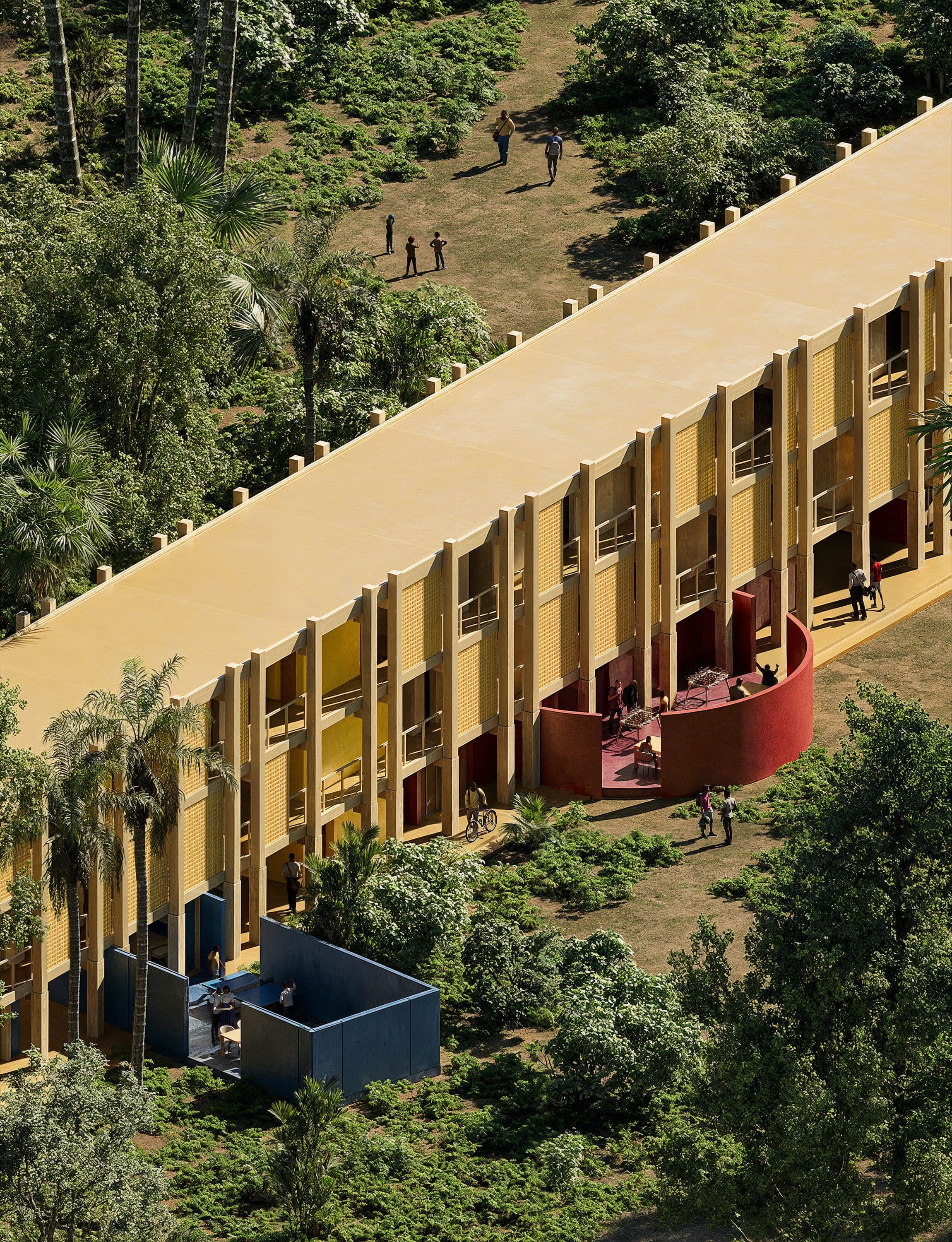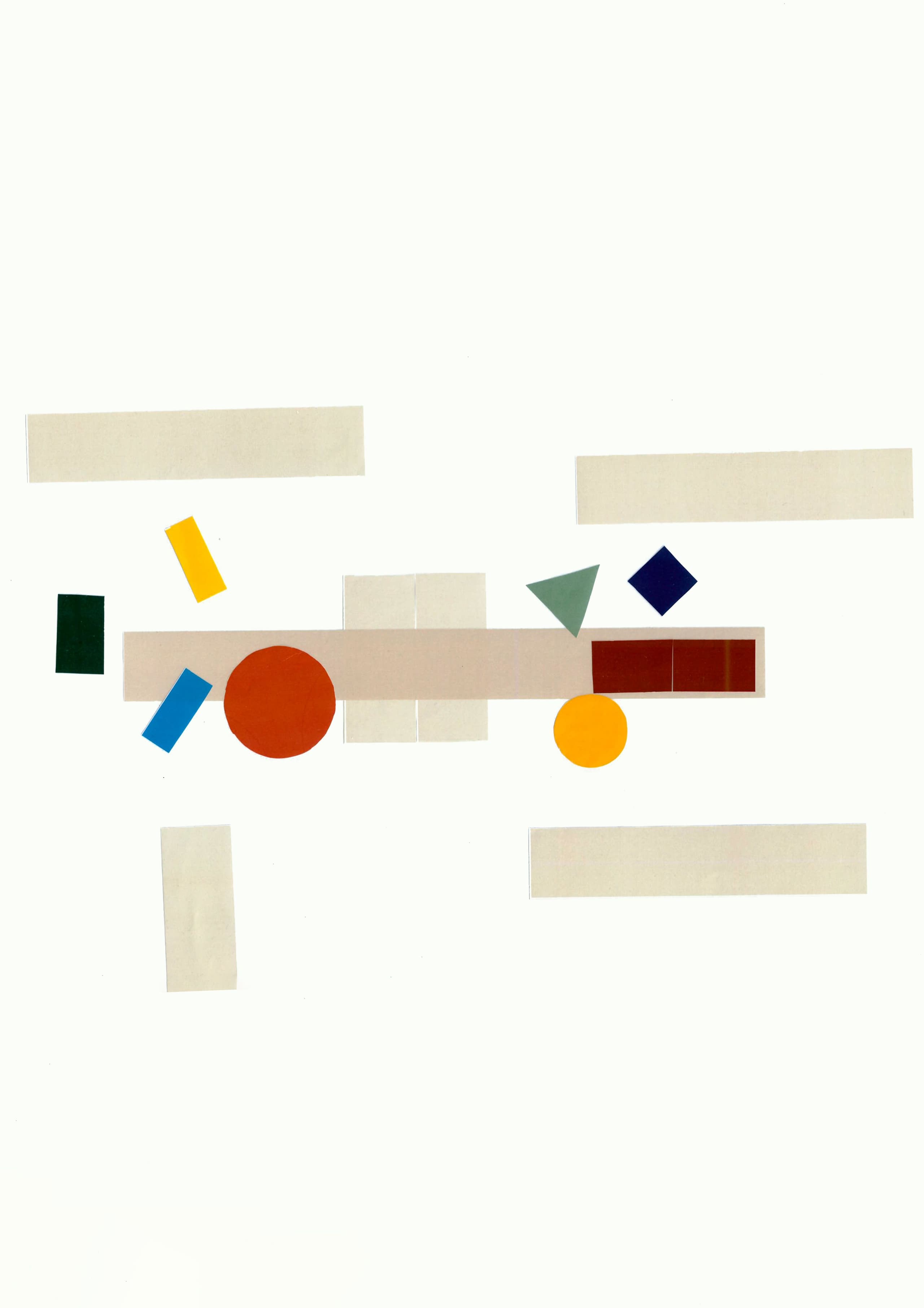Although Benin’s brief period as a Marxist-Leninist state (1972–1990) may have ended, its social values and tangible remnants continue to shape the population today. This is evident in La Place de l’Etoile Rouge, whose name – “Red Star” – reflects the socialist influence during Mathieu Kérékou’s regime.
Originally designed as a venue for revolutionary events, parades, and celebrations, the square occupies a central position in Cotonou’s urban fabric, linking some of the city’s most important sites. However, as the city grew and became more densely populated, uncontrolled traffic hindered pedestrian access, and the space around the monument began to deteriorate.
The aim of the current project is to revitalise the square and restore its role in the community by redefining its identity through architectural interventions. The added infrastructure and new materiality are intended not to erase the square’s historical features, but to enhance them, improving the functionality of the site while respecting its legacy.
The red star pavilion, which gave the square its name, remains at the centre as a landmark and shelter. The outer (sloping) star, however, is less functional and memorable, and can be removed to free up more space. A smaller circular plinth, encircled by concentric steps and integrated with platforms for seating or gatherings, will replace the large star. The figurative statue is also removed, though the column it stood on remains. This decision reflects a way forward that acknowledges the past without trying to erase it, maintaining the monumental significance of the square.
Moving outward from the central monument, a radial system of spaces develops. A ring of open-air areas surrounds the red star, with a grass amphitheatre on one side for events like concerts and film screenings, and a park with dense native trees on the other, offering shade. A new timber building for cafes, bars, and cultural activities will back the amphitheatre, while new pergolas on the opposite side will create a permanent space for market stalls. These structures will form a boundary around the green space to separate it from the surrounding roads.
Multiple pedestrian routes will continue to provide access to the square, with the most prominent following the axis of Rue 400. On weekends, traffic will give way to a pedestrian zone for the markets, while during the week, traffic will flow more smoothly around an upgraded roundabout system. From all roads leading to the square, the monument will remain clearly visible.
Trees planted near the edge of the site will help activate the neighbouring buildings and bring a sense of cohesion to the square. The unified material palette, drawn from clay and laterite, will harmonise the different zones of the masterplan, complementing the red of the monument and reinforcing the identity of La Place de l’Etoile Rouge.
